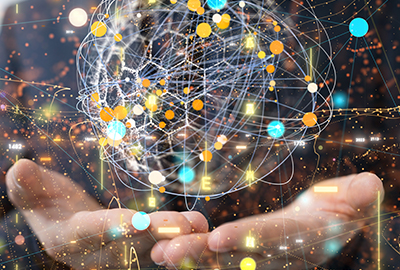 Computer vision continues to grow at an explosive rate. Giving robots and other automated devices the ability to “see” their environment opens up new possibilities in all kinds of applications. From smartphones to autonomous vehicles to delivery drones, computer vision is everywhere.
Computer vision continues to grow at an explosive rate. Giving robots and other automated devices the ability to “see” their environment opens up new possibilities in all kinds of applications. From smartphones to autonomous vehicles to delivery drones, computer vision is everywhere.
Here are 7 computer vision trends you need to know about. Don’t ignore these emerging trends or you’ll be left behind!
1. Health and safety. One exciting use for computer vision is detecting when humans might be in danger and alerting them. On construction sites, many injuries are caused by failure to use PPE correctly or human error when operating machinery. Computer vision can alert workers or supervisors when it detects a missing harness or shut down a forklift making an unsafe maneuver.
2. Retail. Computer vision is helping customers to have a better shopping experience. Many dread the chore of grocery shopping, especially waiting in long lines. Stores equipped with computer vision are able to detect what consumers pull off the shelf and charge them accordingly without waiting in line. Similar systems are also helping with loss prevention.
3. Autonomous vehicles. Automakers have been quick to add computer vision systems to the latest models of cars and trucks. Some are more ambitious than others with the goal to offer fully autonomous driving to allow humans to focus on other tasks during their commutes. But other manufacturers use computer vision to alert drivers to hazards, offer emergency stopping, or keep drivers in their own lanes.
4. Thermal imaging. With the increasing labor shortage, manufacturers are finding it hard enough to get workers to build their products, let alone inspect them. Fortunately, non-destructive testing computer vision is filling the gap when inspecting everything from welding defects to radiology imagery.
5. Edge computing. The popularity of cloud computing has helped to connect devices and offers access to a wealth of data. But capturing images and waiting for them to upload to a server for processing takes too long in applications that need analysis in real-time. Computer vision systems are now being designed when processing can be done locally before interfacing with the cloud, saving time and bandwidth.
6. Smart cities. Officials are always looking for new ways to make their cities safer. Computer vision is being integrated into surveillance technology to alert officials about car accidents, public transportation delays, and other types of disturbances. Improving the efficiency in cities can also help improve the environment and quality of life.
7. Convolutional neural networks. CNNs are the deep neural networks used for image analysis. In healthcare, CNNs can rapidly process X–rays, MRIs, and other scans. They are often as effective as human doctors when making a diagnosis. CNNs are also helping farmers to determine the health of their crops and identify what changes are needed to improve yield.
Ready to automate your processes? Find the right camera for your next computer vision project.
